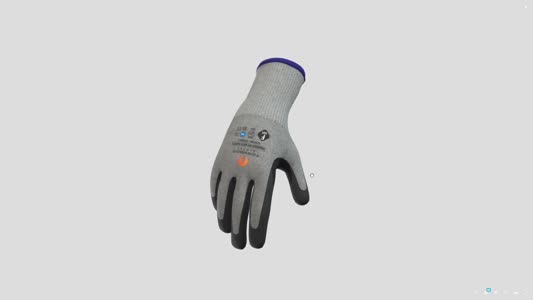
 |
Mark Sennett
Managing Editor |
 |
Kelly Rose
Editor |
ARTICLE
Little improvement in workplace fatalities
23 January 2013
Provisional data released by the HSE shows for April 2011 to March 2012 173 workers were killed - down two from the previous year...
Provisional data released by the HSE shows for April 2011 to March 2012 173 workers were killed - down two from the previous year.
The rate of fatal injury remains the same at 0.6 per 100,000 workers.
Judith Hackitt, the HSE Chair, said:"Britain continues to have one of the lowest levels of workplace fatal injuries in Europe, part of a long term downward trend.
"But we must not forget that these are lives cut short, not statistics - every single one of these deaths will have caused terrible grief and anguish for family and friends as well as workmates and colleagues.
"We want employers to focus on the real risks that continue to cause death and serious injury. HSE is working very hard to make it easier for people to understand what they need to do and to focus on the real priorities. Protecting people from death and serious injury at work should be at the heart of what we all do."
The figures also show the rate of fatal injuries in several of the key industrial sectors with the following figures recorded:
• 49 fatal injuries to construction workers - a rate of 2.3 deaths per 100,000 workers, compared to an average of 59 deaths in the past five years and a decrease from the 50 deaths (and rate of 2.3) recorded in 2010/11
• 33 fatal injuries to agriculture workers - a rate of 9.7 deaths per 100,000 workers, compared to an average of 35 deaths in the past five years and an increase from the 30 deaths (and rate of 8.7) recorded in 2010/11
• Five fatal injuries to waste and recycling workers - a rate of 4.1 deaths per 100,000 workers, compared to an average of six deaths in the past five years and a decrease from the nine deaths (and rate of 8.4) recorded in 2010/11.
Commenting on the figures TUC General Secretary Brendan Barber warned: “These figures are still well above the historic low of two years ago...during previous economic downturns there has been a decrease in the rate of fatalities. The fact that this is not happening now suggests that deaths could rise sharply as Britain comes of out recession, unless urgent action is taken to improve workplace safety.
“The responsibility for these deaths may lie with the employers who break safety laws but ministers also have a duty to ensure that the rules are enforced and that the protection of workers is seen not as a 'burden' on employers but as a duty.â€
The rate of fatal injury remains the same at 0.6 per 100,000 workers.
Judith Hackitt, the HSE Chair, said:"Britain continues to have one of the lowest levels of workplace fatal injuries in Europe, part of a long term downward trend.
"But we must not forget that these are lives cut short, not statistics - every single one of these deaths will have caused terrible grief and anguish for family and friends as well as workmates and colleagues.
"We want employers to focus on the real risks that continue to cause death and serious injury. HSE is working very hard to make it easier for people to understand what they need to do and to focus on the real priorities. Protecting people from death and serious injury at work should be at the heart of what we all do."
The figures also show the rate of fatal injuries in several of the key industrial sectors with the following figures recorded:
• 49 fatal injuries to construction workers - a rate of 2.3 deaths per 100,000 workers, compared to an average of 59 deaths in the past five years and a decrease from the 50 deaths (and rate of 2.3) recorded in 2010/11
• 33 fatal injuries to agriculture workers - a rate of 9.7 deaths per 100,000 workers, compared to an average of 35 deaths in the past five years and an increase from the 30 deaths (and rate of 8.7) recorded in 2010/11
• Five fatal injuries to waste and recycling workers - a rate of 4.1 deaths per 100,000 workers, compared to an average of six deaths in the past five years and a decrease from the nine deaths (and rate of 8.4) recorded in 2010/11.
Commenting on the figures TUC General Secretary Brendan Barber warned: “These figures are still well above the historic low of two years ago...during previous economic downturns there has been a decrease in the rate of fatalities. The fact that this is not happening now suggests that deaths could rise sharply as Britain comes of out recession, unless urgent action is taken to improve workplace safety.
“The responsibility for these deaths may lie with the employers who break safety laws but ministers also have a duty to ensure that the rules are enforced and that the protection of workers is seen not as a 'burden' on employers but as a duty.â€
MORE FROM THIS COMPANY
- Global manufacturer prosecuted over factory worker's death
- Subsidised training available as part of new campaign
- Draft guidance on first aid changes
- Company fined after worker's fingers are crushed
- Pig farm prosecuted in Northern Ireland's first ever Corporate Manslaughter conviction
- Slight fall in workplace injuries and ill-health
- Construction company fined after worker blinded in fall
- HSE sets out first pieces of legislation to be cut
- Workplace ill health and injury continuing to fall
- Chocolate manufacturer fined over fractured finger
RELATED ARTICLES
- No related articles listed
OTHER ARTICLES IN THIS SECTION























